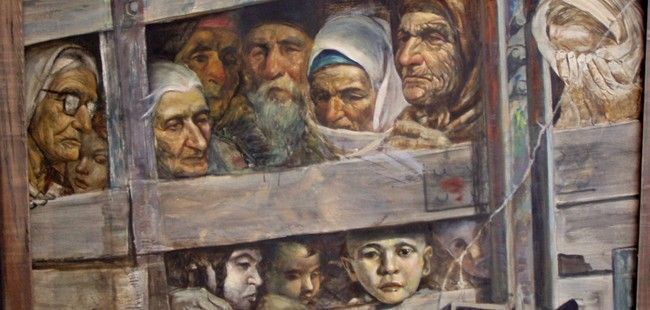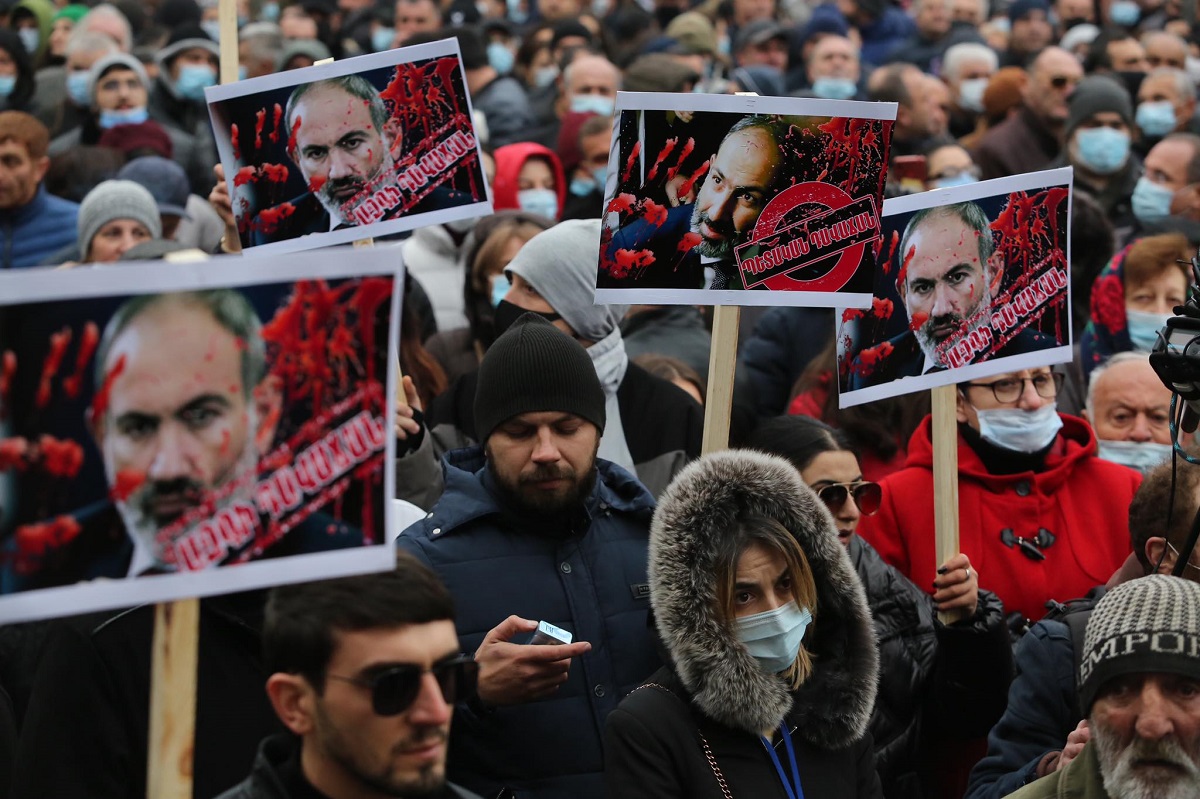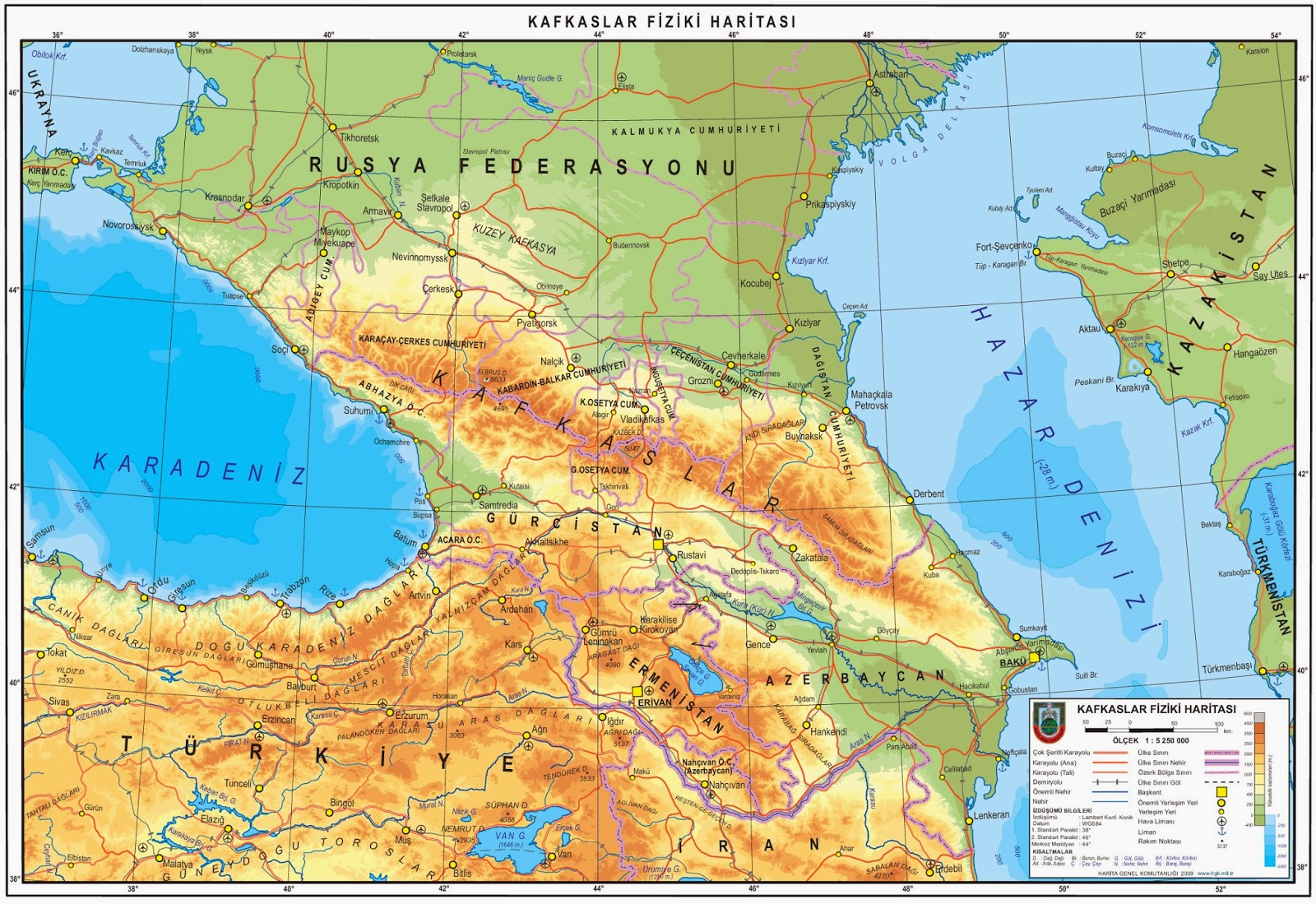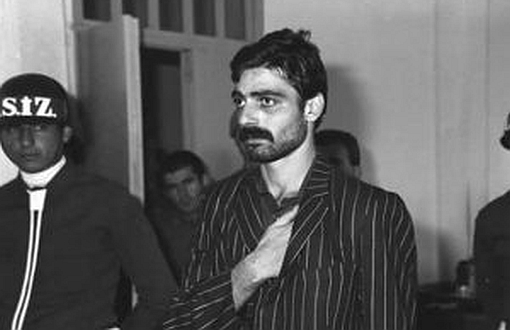
For the many, the month of May brings the joy of the best days of spring. People energized by the blaze of the sun and the blossom of nature fall into the reverie of the summer. One can notice a general livelihood in the month of May. However, for some, the month of May resurrects other images which are, allas, painted with sorrow; the misery of the choking muggy heat of the cattle wagons and the cold winds that penetrate into the soul; despair of the never ending railroad tracks disappearing into the Urals and Central Asia, and the endless darkness of the waves of the Black Sea; the distress of being uprooted from the native land and being separated from the loved ones; and the anxiety of the obscurity of the new destinations imposed by the invaders. In brief, the month of May signifies the terror of the forced exile.
These are the images that the month of May resurrects in the minds of the Crimean Tatars and the Circassians, whose ancestors were deported from their native lands; the green peninsula of Crimea and the majestic highlands of the Caucasus, and found a new home in Anatolia and elsewhere. 18 May and 21 May are observed by the Crimean Tatars and the Circassians, respectively, as the commemorative days of their forced exiles.
The Tsarist Russia’s Expansionism and the Exodus of the Crimean Tatars and the Circassians
The dark clouds for the Crimean Tatars and the Circassian appeared on the horizon by the late 18th century, when the Tsarist Russia stepped up its southward expansion. Crimea was annexed by the Tsarist Russia in April 1783. This resulted in the massive emigration of the indigenous Crimean Tatars from the peninsula to present-day Romania, Balkans, and Turkey, which were then Ottoman lands. Whereas in 1778 there were approximately 500,000 Crimean Tatars in Crimea constituting 95% of the total population, this number fell to 171,751 by 1793. The emigration of the Crimean Tatars continued in the coming decades that resulted not only in the erosion of the Crimean Tatar population, but also in the loss of the human capital in the peninsula. Meanwhile, the Slavic population both in percentage and in real numbers unnaturally increased as a result of the replacement of the Crimean Tatars by the Slavs in line with the long-term demographic policy of the Russian Empire that sought to Slavicize the annexed lands.
|
Tatar Population in Crimea (1793-1994) |
||||||||||
|
Year |
1793 (1) |
1802 (2) |
1862 (9) |
1923 (3) |
1939 (4) |
1944 |
1970 (6) |
1989 (7) |
1991 (7) |
1994 (7) |
|
Crimean Tatars |
171,751 |
140,000 |
180,052 |
150,000 |
218,179 |
0 |
6,479 |
38,000 |
142,200 |
260,000 |
Source: “Ethnic Composition of Crimea,” International Committee for Crimea, 1999, accessed May 23, 2017, http://www.iccrimea.org/population.html
The Russian annexation of Crimea was a prelude of the similar tragedy that was to fall on the Caucasus. In the same years, Tsarist Russia began the invasion of the Caucasus, a process that lasted almost a century between 1763 and 1864. The struggle of the Circassians to defend their lands against the invading Tsarist forces intensified by 1817. However, Tsarist armies succeeded in repressing the Circassian defense and on 21 May 1864 the Circassian resistance surrendered to Russia.
This was the beginning of the exodus of the Circassians by the Tsarist Russia, accompanied by de-nativization, and Slavicization and colonization of the Caucasus by the Armenians that were brought to the region by the Tsarist Russia. As a consequence of the systematic ethnic cleansing of the Circassians, approximately 1.5 million people (approximately 90% percent of the native Circassian) were deported mainly to the Ottoman lands. Many of those people lost their lives during the deportation and afterwards because of the inhumane conditions of the exile. Today in Turkey and other places which host Circassian communities, 21 May is observed as the commemorative day of the forced deportation and ethnic cleansing of the Circassians.
The majority of the Crimean Tatars and the Circassians ended up in the present-day Turkey. They constructed new lives in this new country. Thankfully, their host country did not hesitate to embrace the new comers as its own. Likewise, these uprooted people adopted the new country as their own and took strong roots in their new land.
The Tragedy that was Repeated in the 20th Century
However, tragedies imposed on the Crimean Tatars and the Circassians in April 1783 and on 21 May 1864 went on throughout decades. De-nativization and Slavicisation of Crimea and the Caucasus continued. Once sovereign peoples, Crimean Tatars in Crimea and the Circassians in the Caucasus were reduced into peoples constituting the population of the Imperial Russia. Shortly after the Bolshevik Revolution, in December 1917 Crimean Tatars under the leadership of Noman Celebicihan, the Crimean Tatar politician, lawyer, and the Mufti of Crimea, Lithuania, and Poland declared the independent Crimea People’s Republic. This independent statehood lasted only until late-February 1918, when the 40,000-troop strong Bolshevik army crushed the Crimean Tatar forces composed of 3,000 soldiers.
However, a much more horrific tragedy comparable to the post-1783 and 1864 tragedies were yet to come for the entire Crimean Tatar population in Crimea and some Circassian peoples.
On 18 May 1944, the deportation of the entire Crimean Tatar population in Crimea began with the order of the Soviet dictator Joseph Stalin. Approximately 230,000 Crimean Tatars were packed in cattle wagons and sent to the Urals and Central Asia without adequate nutrition and other necessary conditions of survival. The journey lasted ten to fifteen days. Crimean Tatars perished in great numbers during and in the aftermath of the journey. When a year passed after 18 May 1944, the Crimean Tatar population reduced by 45%. Today, Crimean Tatars commemorate this great tragedy that they call Sürgünlük (the Exile) on every 18 May.
Between August 1943 and November 1944, Karachais, Kalmyks, Chechens, Ingushs, Balkars, Kabardins, Karapapaks, Lazes, and Meskhetian Turks of the Caucasus were also exiled to Central Asia by the orders of the Soviet authorities.
Imperial Russian Policy of De-Turkification and Slavicization of its Southern Flanks
Although, Soviet propaganda machine manufactured false allegations and myths to legitimize the deportation of the Crimean Tatars and the Caucasian peoples, such as the accusation of collaboration with the Nazis, the real intent was to clean the Soviet borderlands close to Turkey from Turkic and Muslim peoples, as a continuation of the above mentioned demographic policy of the Tsarist Russia. As to that, one interesting fact is that while some of these peoples later on were permitted to return back to their native lands, this right was denied to the Crimean Tatars and the Meskhetian Turks.
The return of the Crimean Tatars to their native land became possible only by the end of the 1980’s as a result of their long-lasting, resolute and faithful struggle, when the collapse of the USSR began. Accordingly, whereas in 1979 there were 5,422 Crimean Tatars in Crimea (0.2% of the total population), this number grew to 38,365 (1.6% of the total population) in 1989, and 246,073 (10.8% of the total population) in 2001. However, this trend was dramatically cut off by the Russian annexation of Crimea in 2014. After the annexation, Crimean Tatar self-government bodies were outlawed and some 10,000-15,000 Crimean Tatars left the peninsula for the fear of the Russian oppression. As to that, some prominent scholars claim that Russia, indeed, seeks the de-Tatarization of the Crimea and put oppressive measures into practice to initiate such a process. It remains to be seen how the Crimean Tatars will fare and whether they will be able to have a say for their future.
Photo: Worldbulletin.net
© 2009-2025 Center for Eurasian Studies (AVİM) All Rights Reserved
No comments yet.
-
 DEVELOPMENTS IN POST-2020 KARABAKH WAR ARMENIA AND THEIR IMPLICATIONS – 1: THE RIVALRY BETWEEN THE OPPOSITION AND PASHINYAN
DEVELOPMENTS IN POST-2020 KARABAKH WAR ARMENIA AND THEIR IMPLICATIONS – 1: THE RIVALRY BETWEEN THE OPPOSITION AND PASHINYAN
Turgut Kerem TUNCEL 05.03.2021 -
 THE FIRST MEETING OF THE REGIONAL COOPERATION PLATFORM FOR LASTING PEACE AND STABILITY IN THE SOUTH CAUCASUS
THE FIRST MEETING OF THE REGIONAL COOPERATION PLATFORM FOR LASTING PEACE AND STABILITY IN THE SOUTH CAUCASUS
Turgut Kerem TUNCEL 23.12.2021 -
 DEVELOPMENTS IN POST-2020 KARABAKH WAR ARMENIA AND THEIR IMPLICATIONS - IV: IS PASHINYAN COMING TO THE END OF HIS POLITICAL LIFE?
DEVELOPMENTS IN POST-2020 KARABAKH WAR ARMENIA AND THEIR IMPLICATIONS - IV: IS PASHINYAN COMING TO THE END OF HIS POLITICAL LIFE?
Turgut Kerem TUNCEL 31.03.2021 -
 ONGOING TENSIONS IN THE SOUTH CAUCASUS
ONGOING TENSIONS IN THE SOUTH CAUCASUS
Turgut Kerem TUNCEL 04.09.2024 -
 ABUSING THE MEMORY OF ARSHALUYS (AURORA) MARDIGANIAN
ABUSING THE MEMORY OF ARSHALUYS (AURORA) MARDIGANIAN
Turgut Kerem TUNCEL 09.04.2015
-
THE BALKANS AND TURKEY
Alev KILIÇ 26.04.2013 -
 CO-FOUNDER OF THE ARMENIAN REVOLUTIONARY FEDERATION AND ONE OF THE PRECURSORS OF ARMENIAN TERRORISM: KRISTAPOR MIKAELYAN
CO-FOUNDER OF THE ARMENIAN REVOLUTIONARY FEDERATION AND ONE OF THE PRECURSORS OF ARMENIAN TERRORISM: KRISTAPOR MIKAELYAN
Ahmet Can ÖKTEM 14.04.2021 -
 AN AREA OF GLOBAL COMPETITION: THE BALKANS
AN AREA OF GLOBAL COMPETITION: THE BALKANS
Şevval Beste GÖKÇELİK 17.06.2021 -
 WHAT IS THE GOAL BEHIND THE DENIAL OF TERROR?
WHAT IS THE GOAL BEHIND THE DENIAL OF TERROR?
Tuğçe TECİMER - Selenay Erva YALÇIN 24.02.2025 -
A WIRE FENCE ALONG THE MARITSA RIVER – SCHENGEN IS TAKING SHAPE
Alev KILIÇ 19.12.2012
-
25.01.2016
THE ARMENIAN QUESTION - BASIC KNOWLEDGE AND DOCUMENTATION -
12.06.2024
THE TRUTH WILL OUT -
27.03.2023
RADİKAL ERMENİ UNSURLARCA GERÇEKLEŞTİRİLEN MEZALİMLER VE VANDALİZM -
17.03.2023
PATRIOTISM PERVERTED -
23.02.2023
MEN ARE LIKE THAT -
03.02.2023
BAKÜ-TİFLİS-CEYHAN BORU HATTININ YAŞANAN TARİHİ -
16.12.2022
INTERNATIONAL SCHOLARS ON THE EVENTS OF 1915 -
07.12.2022
FAKE PHOTOS AND THE ARMENIAN PROPAGANDA -
07.12.2022
ERMENİ PROPAGANDASI VE SAHTE RESİMLER -
01.01.2022
A Letter From Japan - Strategically Mum: The Silence of the Armenians -
01.01.2022
Japonya'dan Bir Mektup - Stratejik Suskunluk: Ermenilerin Sessizliği -
03.06.2020
Anastas Mikoyan: Confessions of an Armenian Bolshevik -
08.04.2020
Sovyet Sonrası Ukrayna’da Devlet, Toplum ve Siyaset - Değişen Dinamikler, Dönüşen Kimlikler -
12.06.2018
Ermeni Sorunuyla İlgili İngiliz Belgeleri (1912-1923) - British Documents on Armenian Question (1912-1923) -
02.12.2016
Turkish-Russian Academics: A Historical Study on the Caucasus -
01.07.2016
Gürcistan'daki Müslüman Topluluklar: Azınlık Hakları, Kimlik, Siyaset -
10.03.2016
Armenian Diaspora: Diaspora, State and the Imagination of the Republic of Armenia -
24.01.2016
ERMENİ SORUNU - TEMEL BİLGİ VE BELGELER (2. BASKI)
-
AVİM Conference Hall 24.01.2023
CONFERENCE TITLED “HUNGARY’S PERSPECTIVES ON THE TURKIC WORLD"









